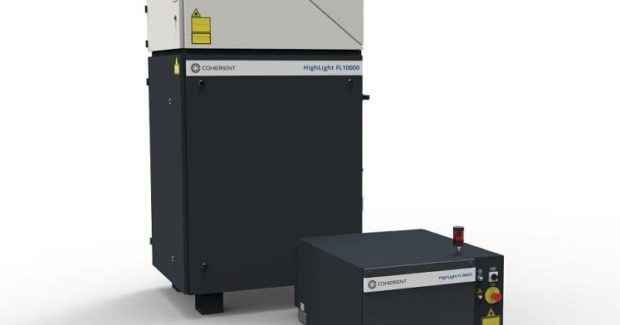A New Approach to Fiber Laser Welding
CleanWeld technology from Coherent delivers up to 80 percent spatter reduction with minimal cracking and porosity in diverse applications, including zero-gap welding of galvanized steel, automobile powertrain component welding, and aluminum and copper welding for electric car batteries.
Posted: January 3, 2019
CleanWeld technology from Coherent Inc. (Santa Clara, CA) represents an integrated approach to fiber laser welding that delivers up to 80 percent spatter reduction, as well as minimal cracking and porosity. In addition to improved process consistency, it allows certain welding processes to be performed with up to 40 percent less laser power. Delivering unique beam intensity profiles, including the new “ARM” fiber laser technology, is just one aspect of the CleanWeld approach. Its process-optimized delivery optics and focusing heads, backed by extensive welding knowledge and in-house applications development capabilities, provide users with laser welding systems that are tailored to their specific requirements.
“While fiber lasers have been used in welding for over a decade, many end users are still seeking to improve part quality, production throughput and process costs,” reports Frank Gäbler, the director of product marketing at Coherent. “This integrated system is much more than just the laser itself, which is necessary because there are numerous factors besides the laser that affect the welding process. The real goal is to control and maximize the stability of the keyhole and melt pool during the welding process – that’s what produces superior results. But actually accomplishing this can require a variety of techniques that range from changing the intensity distribution of the focused laser spot, to introducing beam motion, to other factors like controlling vapor evacuation. CleanWeld addresses all of these areas. The benefits of this approach are already being adopted in diverse applications, including zero-gap welding of galvanized steel, automobile powertrain component welding, and aluminum and copper welding for electric car batteries.”
Coherent also offers the new HighLight SQD option for their HighLight fiber lasers that provides cutting and welding systems integrators with a turnkey, simple to use and cost effective means to implement process monitoring. The HighLight SQD comprises process sensors integrated directly into special fiber laser connectors that detect back reflected laser power and visible spectrum process emissions. These signals, which are provided in either analog or digital CAN bus form (at a 2 kHz sampling rate), can be used to detect various key process events. For cutting, these include piercing end, cut interruption, and self-burning during piercing. For welding, the HighLight SQD can indicate incomplete penetration (due to insufficient power at workpiece, focal shift or material changes), blow holes, contamination, gap detection for overlap joints, and other process instabilities.
Because it is contained within the fiber connector, HighLight SQD delivers a more compact and easier to integrate solution than existing sensing systems employing dichroic mirrors or other bulk optical elements. These traditional methods often suffer from signal variability and increase the weight and size of the process head. Additionally, this process monitor is less costly than available sensors based on bulk components. For the end user, ease-of-use is further enhanced through a software interface that is integrated within the laser GUI.
Coherent Inc., 5100 Patrick Henry Drive, Santa Clara, CA 95054, 408-764-4000, t[email protected], www.coherent.com.















